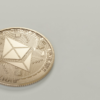The evolution of money has been a long and interesting process that continues to change with the introduction of new technologies. One such technology is cryptocurrency, which arose in 2009 as an idea published by Satoshi Nakamoto. Cryptocurrency has become increasingly popular over the last few years because it offers benefits like low fees, fast transactions, and better security than fiat currency.
In this post we’ll explore how money evolved from precious metals to paper bills, and how cryptocurrencies have evolved from their conception to where they are today.
A History of Money

Prehistoric people were among the first to use banks, which led them to create a new system of recording their transactions. The ledger was born out of this need for accuracy and transparency as traders began storing valuables in these ancient institutions located all around Mesopotamia (where the invention of banks is thought to have taken place).
Grains, cloth, and other things of value were all used as ‘money.’ And, yes, while these are all different things, they had some things in common. Namely, they had to be physical, resilient, and, most importantly, the community had to agree that these items did indeed have value.
Eventually, grains and cloth were replaced by coins, and ancient Athens was one of the first cities to adopt the coin as a true payment method. After all, you can just grow more grain and sew more cloth, so people could literally grow and create their own wealth. But because it was very hard to find your own gold and silver and melt it down and put a stamp on it (that’s still hard even by today’s standards), coins emerged as the new currency.
In 100 BC, the Chinese invented paper. They soon realized that they could use this material to transfer their money from one place of value to another without carrying coins around with them. This system relied on a note being exchanged for actual goods, and in time it evolved into something new – the banknote we now know and love. People found exchanging notes instead of tangible items easier than backtracking through the process again until they were given an object worth what was written down as compensation for themselves or others.
The first instance of modern money expanding its supply was when European banks issued more paper notes than could be backed up at once, betting that no one would come knocking on their door the next day demanding gold. The paper currency started to change hands faster because people were using and holding it rather than exchanging it for something else like valuables.
The first major shift in the US monetary system came with President Franklin Roosevelt’s decision to ban private ownership of gold. With the Great Depression and World War II looming on the horizon, one thing was clear – the population could not withdraw all their money at once from banks. But this wasn’t until 1933 under what is now known as Executive Order 6102. This also closed down banks for three days. Presumably to stop any further withdrawals while allowing citizens time to return their own personal holdings of gold before they became illegal.
In 1971, President Nixon decided to remove the US dollar away from any sort of gold backing. It’s here where we’ve come to the modern-day conception of money. But even this is starting to change now. With the rise of credit cards, the world’s supply of money is largely going digital. We now come to Cryptocurrency.
The Rise of Cryptocurrencies

An unknown person or group known as Satoshi Nakamoto published a paper in 2009 that proposed Bitcoin, an open-source, decentralized, and peer-to-peer currency. The document laid out how such digital money would work by combining cryptography with economic incentives for people to provide services without relying on trust between strangers.
The fact that Bitcoin was the world’s first digital currency wasn’t the only selling point. As previously stated, most of the world’s money is used digitally in some form or another. When you swipe your debit or credit card, you are using a type of virtual cash conceptually similar to what many people think about when they imagine cryptocurrencies like bitcoin. It functions similarly on an online level and can be transferred without having any physical bills involved whatsoever.
No, the main benefit of bitcoin, blockchain, and other cryptocurrencies has always been its decentralization. The value that cryptocurrencies hold in this regard is often overlooked because of the price hype generated around it (and, to be honest, that’s understandable). But it’s the potential for the next currency shift that gives it real value. From grains and cloths to coins to banknotes, and now to completely digital currency, it also has the added benefit of being immune to government-controlled circulation.
One of the biggest challenges for people living in poverty-stricken areas is access to a bank account. There are three billion people who do not have one, or roughly 39%, and this means they cannot take advantage of many modern conveniences like online shopping or money transfers. It’s clear there need to be some changes made, so everybody has the same chance at success no matter where you live on our planet.
This means that, despite our modern sense of connection, much of the world remains remote. Globalization is a romantic notion, and it’s so available that we can take for granted its existence. But the truth is we’re just lucky enough to be on the side where “the grass is greener.”
In a world where social borders are blurring, the existing monetary system has to contend with user trust. The rise of cryptocurrencies will eventually push it to an inflection point leading users to decide whether they want this currency or not.
Conclusion
Cryptocurrency arose in 2009 as an idea published by Satoshi Nakamoto. It offers low fees, fast transactions, and better security than fiat currency. We explored how money evolved from precious metals to paper bills and how cryptocurrencies have evolved from their conception to where they are today: a decentralized, peer-to-peer, and open-source currency. It works by combining cryptography with economic incentives for people to provide services without relying on trust between strangers.
Cryptocurrency has the added benefit of being immune to government-controlled circulation. Despite our modern sense of connection, much of the world remains remote. The rise of cryptocurrencies will eventually push it to an inflection point leading users to decide whether they want this currency or not. Bitcoin is being used in a number of countries around the world.
The world is changing, and we want to be a part of that change. Unbanked has the goal of helping people take control over their finances so they can start investing in themselves by transferring cryptocurrency into cash with ease. We believe crypto will play an important role for decades to come because it gives real value back to those who need banking services most: individuals without access at all! Come visit us today if you’re interested in learning more about how we plan on giving your money new life!





